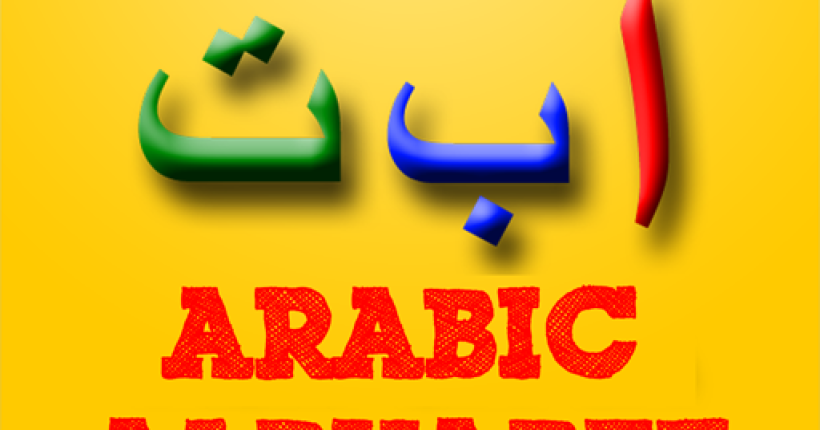Among the biggest challenges in learning Arabic, the common Arabic pronunciation mistakes is one of them. The language has sounds that are not used in English or other European languages, and therefore mistakes are more likely to happen.
These common mistakes in Arabic pronunciation can make words entirely different in terms of their meaning. But relax, most of them can be fixed with practice and correct guidance. Let us have a look at the top 10 mistakes and the way you can eliminate them.
10 Arabic Mistakes of Pronunciation Non-Arabs Still Make
Here are some of the most common Arabic pronunciation mistakes and how you can overcome them easily:
1. Confusing ح (ḥ) and ه (h)
The most common Arabic mistake of pronunciation, perhaps, is confusing the heavier resonant ح (ḥ) with the lighter ه (h). Although in Arabic these two letters have different pronunciation, learners confuse them interchangeably.
Why it happens: Most languages do not have the deeper ḥ sound, so students replace it with the familiar “h.”
Example: ḥalāl (acceptable) versus hilal (crescent moon).
Correction: To pronounce ḥ, constrict your throat a little and exhale without vibrating your vocal cords. Think of a whispy, deeper “h.” Hearing yourself and comparing with native speakers might be useful.
2. Difficulty with the ع (‘Ayn) sound
The letter ع is generally the hardest sound for non-Arabs. It is produced way back in the throat and has no direct parallel in English or most other languages.
Why it happens: Students will either delete the missing sound altogether or replace it with a glottal stop (the break in “uh-oh”).
Example: ‘amal (work) vs. amal (hope). Deleting the missing sound changes meaning completely.
Instruction: Practice constricting the throat ever so little while forcing out the sound. A trick to attempt is to start by uttering “ah” and gradually constrict your throat until you hear the deeper sound. Hearing recitation of the Quran could help you develop a better ear for ع.
3. Blending ق (q) and ك (k)
Another Arabic pronunciation mistake for students is getting ق (qāf) and ك (kāf) mixed up. While ك is a soft “k” sound like the “k” in “kite,” ق is pronounced from the back of the throat.
Why it happens: Students often can’t differentiate between the back-of-throat ق and front-of-mouth ك.
Illustration: qalb (heart) or kalb (dog). This can cause some embarrassing miscommunications!
Instruction: Place the back of your tongue against your throat to produce a louder and deeper sound for ق. Alternate between ك and ق to hear the difference.
4. Difficulty with غ (gh) and خ (kh)
One of the common Arabic pronunciation mistakes is the guttural sounds الغ and الخ they are tricky since they require control of the throat and airflow. Students typically produce غ as a hard “g” and pronounce خ more softly.
Why it happens: These sounds don’t exist in many languages, making them unfamiliar.
Example: ghurūb (sunset) vs. gurūb (wrong), khubz (bread) vs. hubz (mispronunciation).
Fix: For غ, imagine the French “r” in Paris. For خ, practice exhaling as if you’re fogging up a mirror. Listening and imitating is key here.
5. Pronouncing ص (ṣ) like س (s)
Arabic has emphatic letters like ص, which are heavier in sound than their plain counterparts. Non-Arabs pronounce ص like س, so meaning gets lost.
Why it happens: Students are not used to emphatic sounds with tongue tension.
Example: ṣabr (patience) and sabr (error).
How to fix it: For ص, put your tongue against your upper palate and push. It has to be deeper and harder than س.
6. Confusing vowel length (short vs. long vowels)
An error you see frequently which is often overlooked in Arabic pronunciation mistakes is the failure to distinguish between long and short vowels. Vowel length has meaning in Arabic.
Reason: Since changing vowel length in English rarely changes word meaning, students are oftentimes not aware of the importance of vowel length.
Example: kitāb (book) contrasts with katab (he wrote).
Instruction: Whenever you see a long vowel such as ā, ū, ī make that noticeably longer in articulation than a short vowel. Exaggerate at first, then find it in a more natural rhythm.
7. Confusing ذ (dh), ث (th), and ظ (ẓ)
These characters are often confused by substituting with sounds in English (like “z,” “s,” or “d”) and altering the word meaning.
Reason: why this is one of the common Arabic pronunciation mistakes? because students are avoiding pushing the tongue out slightly, which having in oral cavity is required.
Examples: thālith (“third”) versus sālith (wrong), dhahab (“gold”) versus zahab (wrong).
Solution: Lightly keep the tongue between your teeth. For ث, say “think.” For ذ, say “this.” For ظ, use a stress form.
8. Omitting stress and rhythm in Arabic words
Arabic has a rhythm, and incorrect stress placement can lead to unnatural speech, regardless of correct letter pronunciation.
Why it happens: Students transfer stress patterns to Arabic from their native language.
Example: In madrasa (school), a mispronounced syllable causes reading difficulty.
Solution: Pay close attention to native speakers, songs, and Quran recitation. Repeat entire phrases, not words, to hear rhythm and intonation.
9. Exchanging ت (t) and ط (ṭ)
Both ت and ط are both pronounced “t,” but ط is a heavy, stressed sound, while ت is light.
Why it happens: Students often pronounce both lightly like English “t.
ṭarīq (road) vs. tarīq (wrong).
Solution: For ṭ, keep your tongue firm against the top of your mouth and make the sound heavier and lower. Practice alternating ت and ط and listen to the difference.
10. Mixing up د (d) with ض (ḍ)
Arabic is called the “language of ḍād” because this sound occurs only in Arabic. Which make th dad one of the most common Arabic pronunciation mistakes. The majority of students cannot pronounce it and replace it with plain د (d).
Why it happens: There is no other language that has the emphatic ḍād, so the students substitute the sound they already know (“d”).
Ex.: ḍaw’ (light) vs. daw’ (mistake).
Solution: In order to pronounce ḍ, press your tongue against your molars and produce a deeper, more full sound. Begin by pronouncing ḍ slowly, and then in words.
How to Overcome Common Arabic Pronunciation Mistakes
Mastery of Arabic pronunciation requires patience and time, but this is definitely achievable if done the right way. This is a step-by-step guide on how to correct the most common Arabic pronunciation mistakes non-Arabs tend to struggle with:
1. Daily Listening
Listen daily to Arabic through Quran recitation, podcasts, or television programs.
Listen not just to the words, but also the way native speakers use rhythm, stress, and throat sounds.
Try “shadowing”, listening and mimicking immediately after a speaker, as copying them.
2. Record Yourself and Compare
Record your speech on your phone or language app.
Compare your pronunciation to native pronunciations of the same words.
Focus on one or two letters a day (e.g., drill ق vs. ك on Monday, ح vs. ه on Tuesday).
3. Learn Through Minimal Pairs
Drill similar-sounding words next to each other in order to condition your ear.
Examples: qalb (heart) and kalb (dog), ḥalāl and halāl, ṣabr and sabr.
Repeat them slowly at first, and then gradually more quickly, until the distinction comes automatically.
4. Use Visual and Physical Aids
Look at videos illustrating tongue and throat placement for difficult letters.
Practice in front of a mirror to make sure you are positioning your tongue correctly for sounds like ث and ذ.
Connect physical actions with sounds; for example, steamy up a mirror while pronouncing خ.
5. Tutor or Native Speaker Practice
Self-practice is valuable, but a tutor will be able to catch mistakes that you did not realize you were making. Even just once or twice a week truly improves your speaking.
With Tareequl Jannah you will learn Arabic pronunciation from a native Arabic teacher who will guide you along the way and correct your mistakes.
6. Recite Quran (Tajweed) Practice
Tajweed rules are there to help your pronunciation in Arabic.
Even if you are not learning it for religious purposes, tajweed practice helps to strengthen your ability with emphatic sounds, throat sounds, and rhythms in Arabic.
Practice short surahs and do them repeatedly until you feel comfortable.
7. Break it Down Into Daily Practice Sessions
5 minutes- throat and tongue warm-up exercises.
10 minutes: Practice one tricky letter (e.g., ع, ḍ).
10 minutes: Practice listening and repeating whole words or short sentences.
5 minutes: Record yourself and compare.
Even 30 minutes daily can be a huge difference in a few weeks.
8. Be Patient and Consistent
Remember: correcting basic Arabic pronunciation mistakes isn’t a race, but a marathon.
Acknowledge small wins, like finally mastering ع or telling the difference between ط and ت.
As days pass by, your pronunciation will get smoother and more natural.
By following these steps, you’ll not only fix your mistakes and overcome common Arabic pronunciation mistakes ,but also build the confidence to speak Arabic clearly and be understood in any context.
Are You Prepared to Excel in Your Pronunciation?
If you’re interested in further improving your Arabic and want structured support from experienced teachers, the Tareequl Jannah’s Arabic for Beginners Course is the ideal starting point. The course is structured to assist students like you in building a strong foundation in Arabic letters, sounds, and words in order to avoid making these pronunciation mistakes altogether.
Join now and start learning how to communicate confidently and fluently in Arabic!


